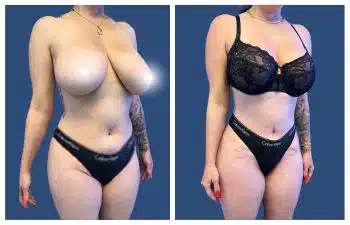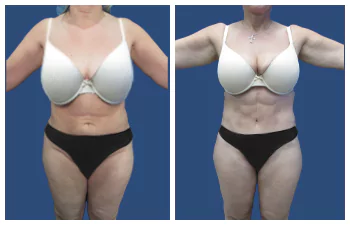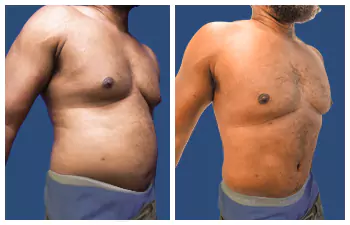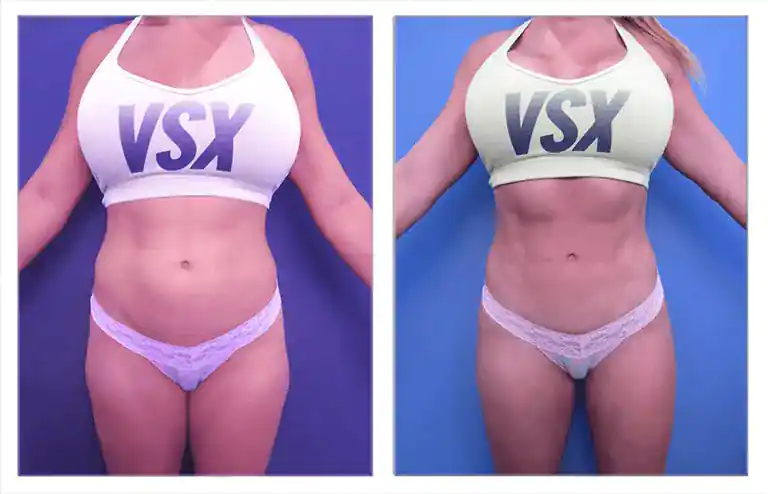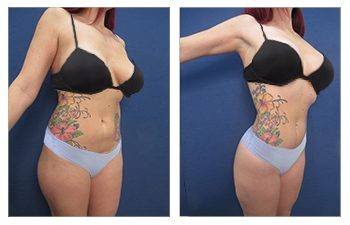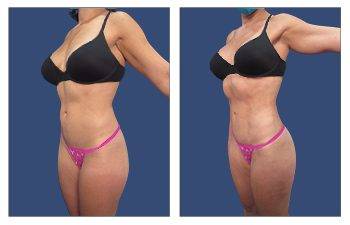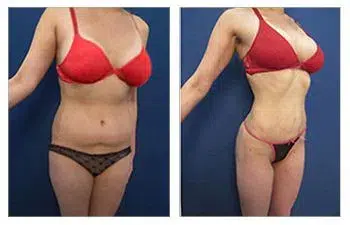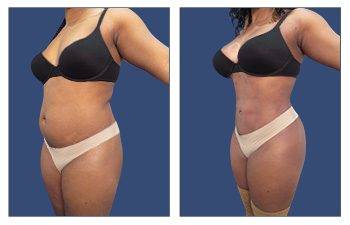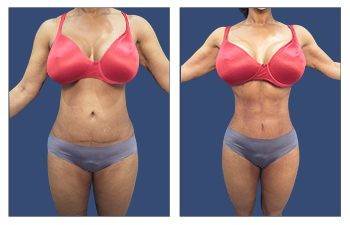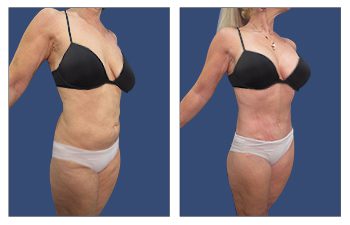[ez-toc]
Introduction: Inner Thigh Fat Pouch
Inner thigh fat pouches can be a common concern for many individuals. Several factors contribute to the accumulation of fat in this area. Genetic predisposition, hormonal imbalances, poor diet, and sedentary lifestyle are all contributing factors.
To effectively address inner thigh fat pouches, it’s important to focus on a combination of factors. Regular exercise that targets the inner thighs, such as lunges, squats, and leg lifts, can help to tone and strengthen the muscles in this area. Incorporating a healthy, balanced diet that is low in processed foods, sugar, and saturated fats can help to reduce overall body fat, including in the inner thighs.
Hydration is also important for overall weight management and reducing bloating. Managing stress levels through techniques such as meditation, yoga, or deep breathing can help to regulate hormones that contribute to fat accumulation. Lastly, ensuring adequate sleep is crucial for optimal hormonal balance and overall weight management.
By addressing these lifestyle factors and adopting a comprehensive approach that includes exercise, diet, hydration, stress management, and adequate sleep, individuals can effectively reduce inner thigh fat pouches and achieve a more toned and balanced physique.
What Causes Inner Thigh Fat Pouch?
Inner thigh fat pouches can develop due to a combination of genetic factors, overall body fat levels, and major life events such as pregnancy. Genetics can play a significant role in determining where the body stores fat, and some individuals may be more prone to storing excess fat in their inner thighs. Overall body fat levels also contribute to the development of inner thigh fat, as higher levels of body fat can lead to fat accumulation in this area. Major life events such as pregnancy can also lead to the development of inner thigh fat, as hormonal changes and weight gain during pregnancy can cause fat to be stored in the inner thigh area.
Excess fat can accumulate on the inner thighs in different ways, such as subcutaneously (under the skin) or intramuscularly (within the muscle). Subcutaneous fat tends to be more visible and can contribute to the appearance of a fat pouch, while intramuscular fat may not be as noticeable but still contributes to overall thigh fat.
Energy imbalance and increased intake of energy-dense foods also play a role in the development of inner thigh fat. Consuming more calories than the body needs leads to an energy imbalance, which can result in the storage of excess energy as fat, including in the inner thighs. Additionally, consuming a diet high in energy-dense foods, such as those high in added sugars and unhealthy fats, can contribute to the accumulation of fat in the inner thigh area.
In conclusion, genetics, overall body fat levels, major life events, energy imbalance, and intake of energy-dense foods all contribute to the development of inner thigh fat pouches.
How to Lose Inner Thigh Fat Pouch?
If you’re looking to tone and slim down your inner thighs, there are a variety of exercises and lifestyle changes that can help you achieve your goal. By focusing on specific workouts and making healthy choices, you can effectively work towards reducing the fat pouch in your inner thighs. Read on to learn about some effective strategies for losing inner thigh fat pouch and achieving your desired results.
Exercise
To target saddlebag fat, a combination of cardio and strength training exercises is essential. For cardio, long-distance running, cycling, and swimming are great options. Interval training can also be incorporated into these cardio workouts by alternating between high-intensity bursts and lower-intensity recovery periods.
Strength training exercises that specifically target the outer thighs and glutes are crucial for toning and reducing saddlebag fat. Some effective exercises include sumo squats, side lunges, hip abductions, and glute bridges. These exercises should be performed with proper form and gradually increased in intensity and resistance.
To see results, aim for at least 30 minutes of cardio exercise per day, 5 days a week. In addition to increasing the duration of your cardio workouts, don’t forget to include strength training at least 2-3 times per week to build lean muscle mass and boost metabolism.
Incorporating hill training into your cardio routine can also be beneficial in targeting saddlebag fat, as it requires more effort and engages the outer thighs and glutes. By following this workout plan and maintaining a healthy diet, you can effectively reduce saddlebag fat and achieve a more toned and streamlined lower body.
Healthy Diet
A healthy and balanced diet is essential for reducing lower belly and hip fat. To achieve this, it is important to focus on consuming lots of fruits and vegetables while avoiding processed sugar, fats, and sodium. By incorporating a variety of colorful fruits and vegetables into your meals, you can ensure that you are getting essential vitamins, minerals, and antioxidants while keeping your calorie intake in check.
In addition to prioritizing fruits and vegetables, it is crucial to focus on eating at a calorie deficit. This means consuming fewer calories than your body needs to maintain its current weight, which can help in reducing overall body fat, including lower belly and hip fat. Minimizing the consumption of junk food and opting for minimally processed foods that are high in protein and fiber, and low in sugar and refined carbohydrates, can also have a significant impact on achieving this goal.
By following a balanced diet that includes plenty of fruits and vegetables, as well as minimally processed foods that are high in protein and fiber, and low in sugar and refined carbohydrates, you can see better results in reducing lower belly and hip fat while promoting overall health and well-being.
Improved Lifestyle Habits
Incorporating healthy carbs, protein, and whole foods into your diet, while avoiding processed and fast food options, can greatly improve your lifestyle habits. Healthy carbs, such as fruits, vegetables, and whole grains, provide essential nutrients and energy. Protein helps with muscle repair and growth, and whole foods contain important vitamins and minerals. By making these dietary changes, you can achieve better hormonal balance, decreased cravings, and easier fat processing.
Specific foods that can improve your diet include quinoa, sweet potatoes, leafy greens, lean meats, and legumes. These foods are great sources of healthy carbs and protein, and they can help to balance hormones and regulate metabolism. Incorporating these foods into your meals can also help to decrease cravings for sugary and processed snacks.
For veggie options, you can try recipes like roasted vegetable quinoa bowls, chickpea and vegetable stir-fry, or black bean and sweet potato tacos. These recipes are not only delicious but also packed with healthy carbs, protein, and whole foods, making them excellent choices for improving your diet and lifestyle.
Medical Weight Loss
For a personalized medical weight loss program, it is essential to consult with a medical professional to tailor the program to specific goals, age, and medical history. Here are the steps for creating a comprehensive plan:
1. Consultation with a medical professional to assess current health status, weight loss goals, and any medical history that may impact the program.
2. Customized nutrition plan developed with the guidance of a registered dietitian or nutritionist, taking into consideration dietary preferences, food allergies, and calorie needs.
3. Personalized exercise plan designed with the help of a fitness trainer, focusing on cardiovascular exercise, strength training, and flexibility exercises.
4. Hormone therapy, if deemed necessary, may be prescribed by a healthcare provider to address hormonal imbalances that may be impacting weight loss efforts.
5. Regular monitoring and follow-up appointments with the healthcare team to track progress, adjust the plan as needed, and address any challenges or concerns.
6. Support and education from the healthcare team to promote sustainable lifestyle changes and effective weight management.
By implementing these steps and working closely with a medical professional, individuals can create a personalized medical weight loss program that is safe, effective, and tailored to their specific needs and goals.
Cosmetic Treatments for Inner Thigh Fat Pouch
Non-surgical cosmetic treatments for addressing inner thigh fat pouches include cryolipolysis (CoolSculpting), radiofrequency (RF) treatments, and laser lipolysis. Cryolipolysis works by freezing the fat cells, causing them to be naturally eliminated from the body. RF treatments use radiofrequency energy to heat the deeper layers of the skin, stimulating collagen production and reducing fat. Laser lipolysis, on the other hand, utilizes laser energy to target and melt away the fat cells.
These treatments offer minimally invasive solutions for reducing fat pouches and improving skin tone in the inner thigh area. They provide effective alternatives to surgical procedures like liposuction, with less downtime and discomfort. Additionally, non-surgical treatments for inner thigh fat pouches can be tailored to individual needs, providing targeted and customized results.
Overall, cryolipolysis, radiofrequency treatments, and laser lipolysis are viable options for those looking to address inner thigh fat pouches without undergoing surgery. It is important to consult with a qualified cosmetic professional to determine the most suitable treatment based on individual goals and concerns.
Vaser Liposuction
Vaser liposuction differs from traditional liposuction methods in that it utilizes ultrasound technology to dislodge fat cells before they are removed from the body. This makes the fat removal process easier and less traumatic for the surrounding tissues, potentially leading to quicker recovery times for patients. The ultrasound energy also helps to tighten the skin in the treated areas.
Vaser liposuction is effective in targeting specific areas of the body where traditional liposuction may be more difficult, such as the inner thighs, arms, and chin. The precision of the ultrasound technology allows for more accurate and sculpted results in these areas.
The benefits of Vaser liposuction include minimal downtime, decreased risk of complications, and potentially better skin tightening compared to traditional methods. However, the procedure may be more expensive and could require a longer recovery time compared to non-invasive fat reduction techniques.
In conclusion, Vaser liposuction offers a more advanced and precise approach to fat removal, especially in difficult-to-reach areas such as the inner thighs, with the potential for quicker recovery times and more sculpted results.
Renuvion Skin Tightening
Renuvion skin tightening utilizes helium plasma technology to effectively tighten loose skin and stimulate collagen production. The procedure involves the use of a specialized device that delivers a combination of helium gas and radiofrequency energy to create a precise and controlled thermal effect on the skin. This causes the collagen fibers to contract, resulting in immediate skin tightening, while also stimulating long-term collagen production for further improvement in skin elasticity and firmness.
Renuvion skin tightening can be used on various areas of the body where loose skin is a concern. This includes the face, neck, arms, abdomen, and thighs, making it a versatile solution for individuals seeking to address skin laxity in multiple areas. The treatment offers minimal downtime and can be performed as a standalone procedure or in conjunction with other cosmetic treatments for a comprehensive rejuvenation approach. With its ability to target loose skin and stimulate collagen production, Renuvion is a popular choice for individuals looking to achieve a more youthful and contoured appearance.
Inner ThighTuck
The inner thigh tuck is a non-invasive cosmetic treatment option for addressing sagging and looseness in the inner thighs without the need for surgery. During the procedure, the inner thighs are targeted with a combination of radiofrequency and ultrasound energy to tighten and firm the skin, as well as stimulate collagen production. This results in a more contoured and toned appearance in the treated area.
The process of the inner thigh tuck involves the use of specialized devices to deliver energy to the inner thigh area, which encourages the body to naturally rejuvenate and tighten the skin. Results typically improve over a few months as the body continues to rebuild collagen. Recovery time for the inner thigh tuck is minimal, with most patients able to return to their normal activities immediately following the procedure.
This non-invasive procedure offers potential results of tighter and smoother inner thighs without the need for surgical intervention. Many individuals find the inner thigh tuck to be an effective option for addressing sagging inner thighs and achieving a more youthful and sculpted appearance. It is important to consult with a qualified cosmetic professional to determine if the inner thigh tuck is the right treatment option for your specific needs.
Horizontal Lift (Groin Based)
The Horizontal Lift (groin-based) is a targeted thigh exercise that focuses on the upper inner thigh area. To perform this exercise, begin by laying flat on your back and engaging your abdominal muscles. Lift your legs toward the ceiling, keeping them straight and together. Then, lower one leg out to the side while ensuring that your hips remain on the ground. Squeeze both legs together at the top of the movement and then repeat the exercise on the other side.
This exercise is an effective way to strengthen and tone the inner thigh muscles, helping to improve overall leg strength and stability. The Horizontal Lift (Groin Based) is a great addition to any lower body workout routine and can be performed using just your body weight or with the addition of ankle weights for added resistance.
Incorporating this exercise into your workout regimen can help target and tone the often overlooked inner thigh muscles, resulting in improved overall lower body strength and muscle definition. So, if you’re looking to add variety to your thigh workout and focus on the inner thigh area, the Horizontal Lift (groin-based) exercise is a great choice.
Vertical Lift
The vertical lift procedure is a type of thigh lift that targets excess skin and fat on the inner and outer thighs, as well as the buttocks. What sets the vertical lift apart from other types of thigh lifts is its specific technique, which involves making an incision from the groin area down to the inner part of the knee, allowing for a more comprehensive correction of sagging skin and excess fat. This technique also provides the added benefit of lifting the buttocks and creating a more proportionate and contoured lower body.
The potential benefits of a vertical lift include improved overall body shape, increased self-confidence, and enhanced comfort. However, like any surgical procedure, there are risks involved, such as scarring, infection, and prolonged swelling or bruising. Recovery from a vertical lift typically involves wearing compression garments, limiting physical activity, and attending follow-up appointments with the surgeon to monitor progress and address any concerns.
In summary, the vertical lift procedure is a specialized type of thigh lift that targets excess skin and fat on the inner and outer thighs, as well as the buttocks, utilizing a specific technique to achieve optimal results.
Candidates For Inner Thigh Fat Removal
The ideal candidate for inner thigh fat removal is someone who is already close to a healthy weight range and is struggling with stubborn pockets of fat in the inner thigh area despite a healthy diet and regular exercise. The candidate must be committed to maintaining their new weight post-surgery through lifestyle changes and a continued focus on healthy habits. Inner thigh fat removal is not a weight-loss alternative, and surgical procedures should not be pursued solely for achieving a “thigh gap” or for cosmetic reasons.
There are both medical and non-surgical procedures available to address stubborn inner thigh fat. Non-surgical options may include liposuction or laser treatments, while surgical options may include a thigh lift or body contouring procedures. Candidates need to consult with a professional to discuss the best treatment options for their specific needs and goals. Overall, the ideal candidate for inner thigh fat removal is close to a healthy weight range, committed to maintaining their weight and seeking treatment for stubborn inner thigh fat that has not responded to diet and exercise.
Lifestyle Factors and Fat Pouches on Inner Thighs
Fat pouches on the inner thighs can be a source of frustration for many individuals, but effective lifestyle changes can help address this issue. Regular exercises targeting the inner thighs, such as squats, lunges, and inner thigh toning exercises, can help reduce fat and improve muscle tone in this area. Pairing exercise with a healthy diet rich in nutrient-dense foods can further promote fat loss and overall health. Adequate hydration, stress management techniques, and sufficient sleep are also important factors in managing fat pouches on the inner thighs.
It’s important to address genetic predispositions, hormonal changes, unhealthy diet, lack of exercise, and other lifestyle factors contributing to the development of fat pouches on the inner thighs. It’s crucial to adopt a holistic approach that encompasses all of these factors to see long-lasting results. By making these lifestyle changes, individuals can effectively target and reduce fat pouches on their inner thighs, leading to a healthier and more confident lifestyle.
Exercises to Reduce Fat Pouches on Inner Thighs
Targeted exercises for reducing fat in the inner thigh area include squats, lunges, leg lifts, inner thigh squeezes, and cycling. Squats and lunges are effective for engaging the inner thigh muscles, while leg lifts and inner thigh squeezes specifically target this area. Cycling is another great cardiovascular exercise that helps to burn fat overall, including the inner thighs.
It is important to start at a slow pace and gradually increase the intensity and duration of your workouts to see optimal results. Consistency is key to achieving the desired outcomes. By starting slowly and progressively intensifying and extending the duration of your workouts, you allow your muscles to adapt and strengthen over time. This approach also reduces the risk of injury and muscle strain.
In conclusion, targeted exercises such as squats, lunges, leg lifts, inner thigh squeezes, and cycling can help reduce fat in the inner thigh area. Starting at a slow pace and gradually increasing intensity and duration, while maintaining consistency, is crucial for seeing the best results in toning and reducing fat in this particular area.
Conclusion: Inner Thigh Fat Pouch
Fat pouches on the inner thighs can be caused by a variety of factors, including genetics, hormonal changes, unhealthy diet, lack of exercise, and lifestyle factors. Genetics plays a significant role in determining where your body stores fat, and for many people, the inner thighs are a common area for fat accumulation. Hormonal changes, such as those that occur during pregnancy or menopause, can also lead to increased fat storage in the inner thighs. An unhealthy diet high in processed foods and lacking in nutrients can contribute to fat buildup, as can a sedentary lifestyle with little to no physical activity.
To reduce inner thigh fat, it’s important to engage in targeted exercises that focus on strengthening and toning the inner thigh muscles. Incorporating exercises like squats, lunges, and inner thigh lifts into your workout routine can help tighten and tone the muscles in this area. Additionally, adopting a healthier diet that includes plenty of fruits, vegetables, lean proteins, and whole grains can help reduce overall body fat, including fat on the inner thighs. Making lifestyle changes such as increasing physical activity, reducing stress, and getting an adequate amount of sleep can also contribute to reducing inner thigh fat. By addressing these various factors, it is possible to effectively reduce fat pouches on the inner thighs and achieve a more toned and sculpted appearance.

